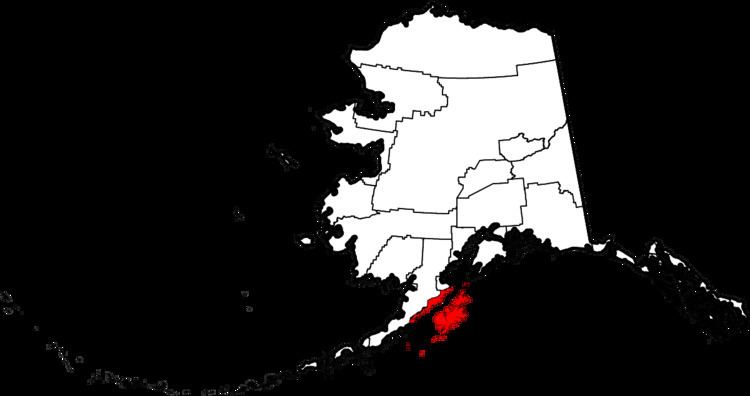Local time Friday 3:07 AM | ||
 | ||
Weather -3°C, Wind NW at 8 km/h, 57% Humidity | ||
Port Wakefield is a ghost town in the U.S. state of Alaska. It is located on the northeast coast of Raspberry Island in the Kodiak Archipelago, along the western shores of the Gulf of Alaska.
Map of Port Wakefield, Alaska 99615, USA
The community was established shortly after World War II by its namesake, Lowell Wakefield, after he relocated the family's salmon cannery business, Apex Fish Company, from Anacortes, Washington and renamed the company Wakefield Fisheries.
Wakefield, who is regarded as the founder of the Alaskan king crab industry, introduced the canning of king crab, partly because of declining salmon stocks in surrounding waters. As well as the cannery, cedar log houses and a church were built for the workers.
Port Wakefield suffered badly in the 1964 Alaska earthquake and tsunami, when Raspberry Island subsided by as much as six feet. This was the most powerful recorded earthquake in North American history, and the third most powerful ever measured by seismograph; with a moment magnitude of 9.2 and a maximum Mercalli intensity of XI (Extreme). The town was not destroyed, but the cannery and community were no longer viable. The land was eventually purchased and is now used for tourism, as wilderness lodges.
The crab cannery was relocated to Port Lions on Kodiak Island, in a much more accessible location, with a good dock and harbor facilities. The cannery was connected to Port Lions by a long causeway and a new road. Some of the cedar log houses were moved on barges from Port Wakefield to Port Lions, where they still stand. However, the cannery burnt down and has not been rebuilt since.
